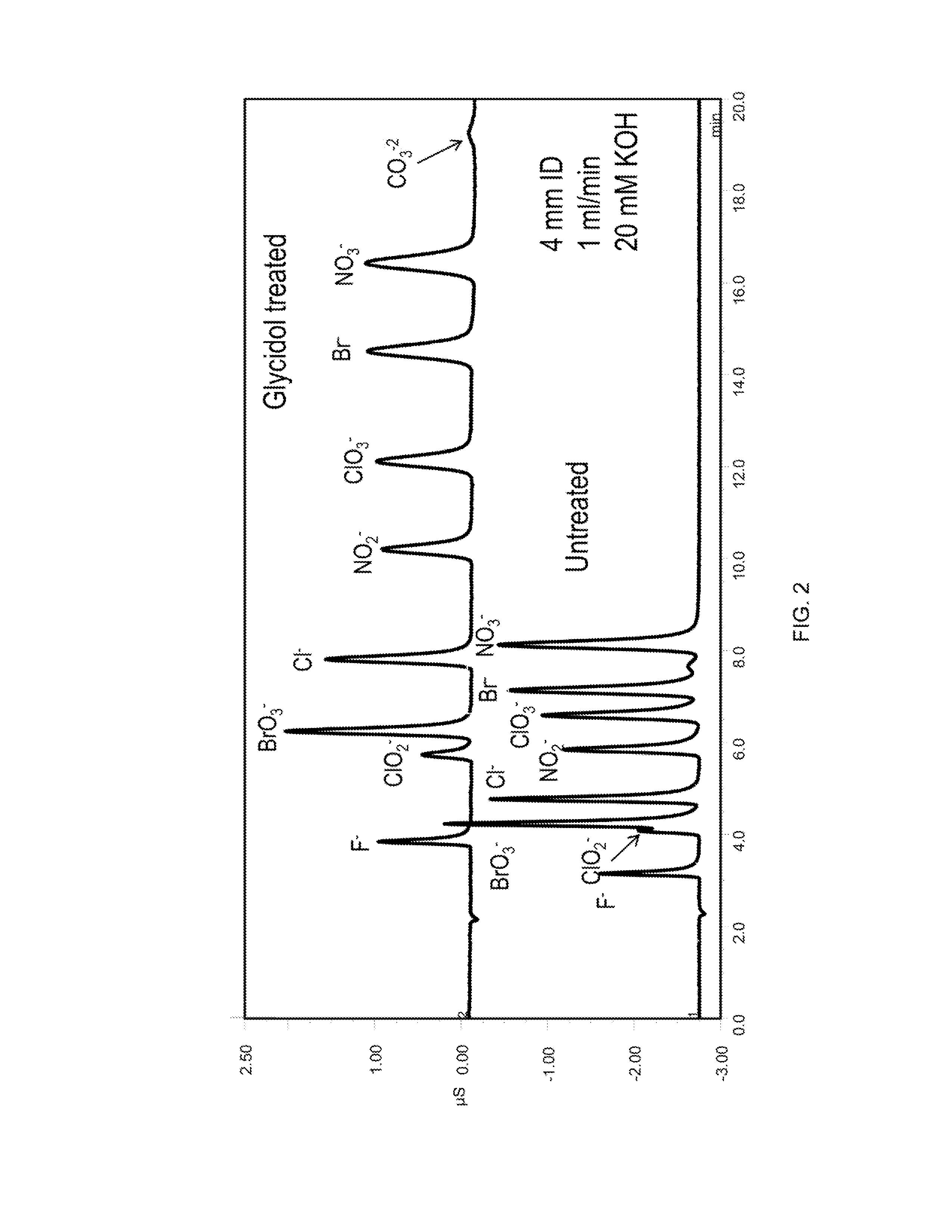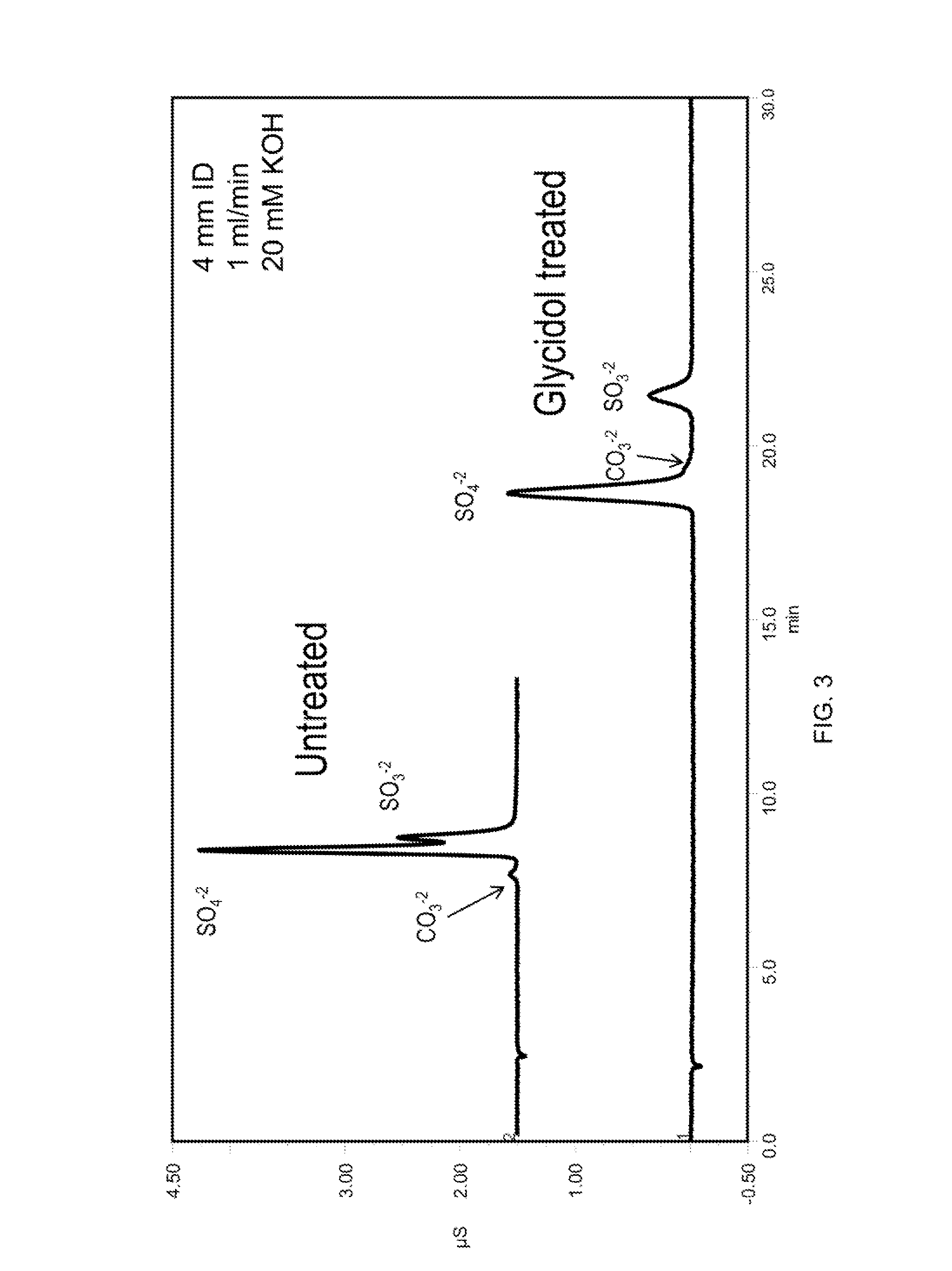Glycidol functionalized anion exchange stationary phases
a technology of functionalized anion exchange and glycocidol, which is applied in the direction of amphoteric ion exchangers, separation with moving sorbents, chemical/physical processes, etc., can solve the problem of compromising the ability to quantitate sulfa
- Summary
- Abstract
- Description
- Claims
- Application Information
AI Technical Summary
Benefits of technology
Problems solved by technology
Method used
Image
Examples
example 1
[0124]The column was converted to the hydroxide form by passing 20 mM KOH over the column at 1 mL / min for 10 minutes. The column was then filled with a 20% glycidol solution at 0.5 mL per minute for 10 min while submersed in a 60° C. water bath. The column was then left stagnant for an additional 60 min to allow glycidol to react with the column. At the end of this synthesis cycle the column was rinsed with deionized water for 30 min and then placed in an instrument for evaluation. This cycle was repeated as indicated in the figures. See, FIGS. 2, 3, 5 and 10.
example 2
[0125]An AS19 column was converted to the hydroxide form by passing 20 mM KOH over the column at 1 mL / min for 10 minutes. The column was then filled with a 10% glycidol solution at 0.5 mL per minute for 10 min while submersed in a 60° C. water bath.
[0126]The column was then left stagnant for an additional 60 min to allow glycidol to react with the column. At the end of this synthesis cycle the column was rinsed with deionized water for 30 min and then placed in an instrument for evaluation. This cycle was repeated two more times. See, FIG. 6.
example 3
[0127]An AS19 column was converted to the hydroxide form by passing 20 mM KOH over the column at 1 mL / min for 10 minutes. The column was then filled with a 10% glycidol solution at 0.5 mL per minute for 10 min while submersed in a 70° C. water bath. The column was then left stagnant for an additional 60 min to allow glycidol to react with the column. At the end of this synthesis cycle the column was rinsed with deionized water for 30 min and then placed in an instrument for evaluation. This cycle was repeated as indicated in FIG. 8.
PUM
| Property | Measurement | Unit |
|---|---|---|
| particle size | aaaaa | aaaaa |
| median particle size | aaaaa | aaaaa |
| median particle size | aaaaa | aaaaa |
Abstract
Description
Claims
Application Information
 Login to View More
Login to View More - R&D
- Intellectual Property
- Life Sciences
- Materials
- Tech Scout
- Unparalleled Data Quality
- Higher Quality Content
- 60% Fewer Hallucinations
Browse by: Latest US Patents, China's latest patents, Technical Efficacy Thesaurus, Application Domain, Technology Topic, Popular Technical Reports.
© 2025 PatSnap. All rights reserved.Legal|Privacy policy|Modern Slavery Act Transparency Statement|Sitemap|About US| Contact US: help@patsnap.com



